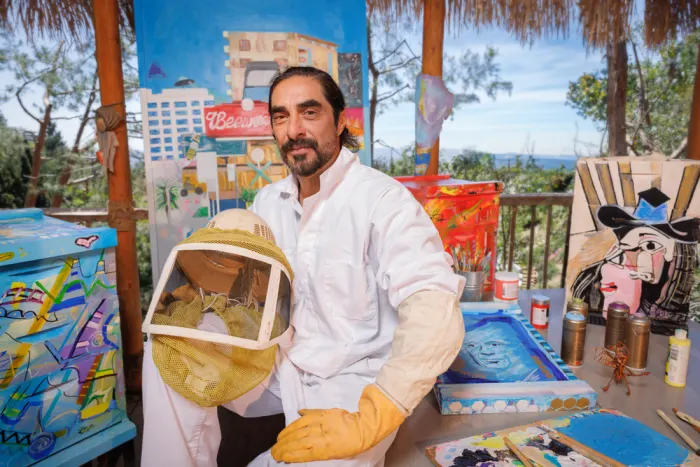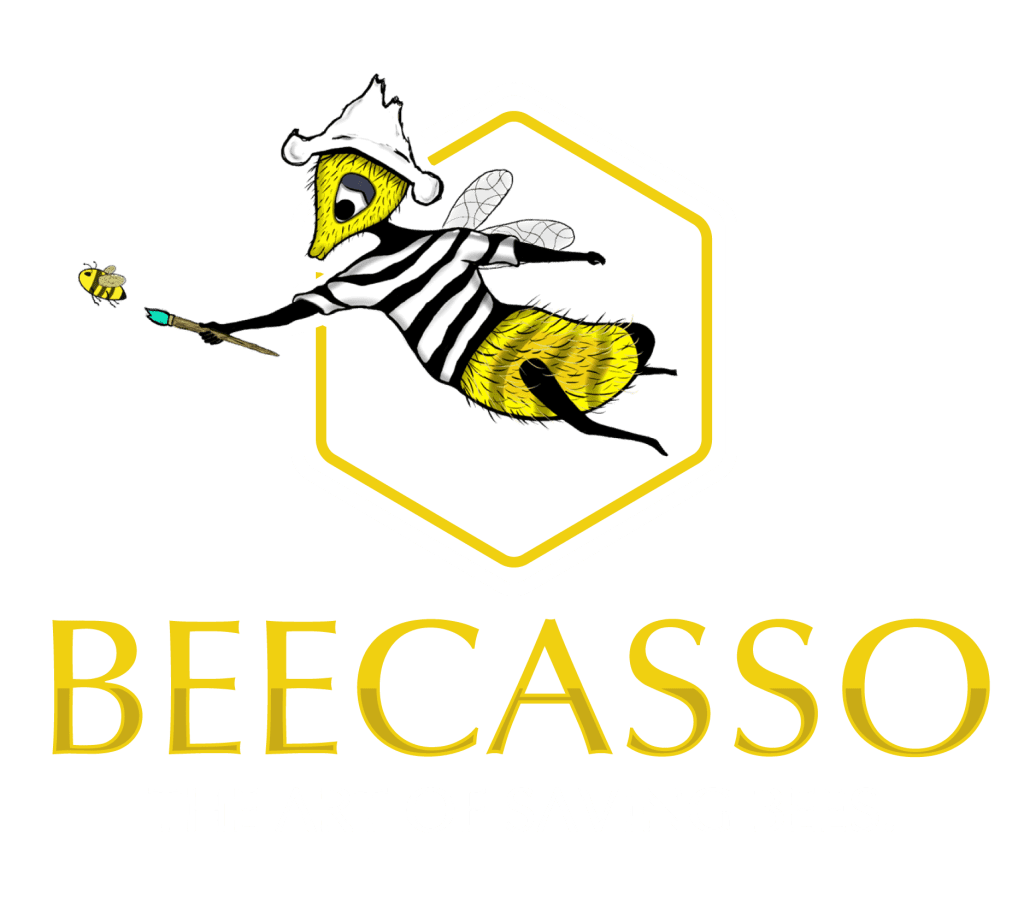L.A.’s most humane bee remover, Steve Downs, is the buzz of the exterminating industry
The giant 50-foot-tall blue screen on the Falls Lake lot at Universal Studios has served as a backdrop for dozens of harrowing water sequences in a slew of Hollywood movies. It’s where George Clooney and Mark Wahlberg battled the elements in The Perfect Storm. Where Tom Hanks splashed down in Apollo 13. Where Hanks splashed down again while landing a crippled airliner in Sully.
But right now, on this warmish morning in late March, nobody is filming anything at Falls Lake. Cameras were slated to start rolling on a reboot of the campy ’90s storm-chasing thriller Twister, but production has been held up after tens of thousands of bees took up residence inside the structure’s large wood beams. Until the swarms of stinging insects are cleared out, the fake tornadoes will have to wait.
Enter Steve Downs, owner of Beecasso, L.A.’s buzziest bee-removal service.
Unlike traditional exterminators, who’d simply napalm the area with bee-killing fumes, then sweep up the mess, Downs, 51, doesn’t exterminate anything. He captures the little critters alive and transports them safely to flower-filled sanctuaries, mostly in the Santa Monica Mountains, where they can live out the rest of their bee lives in honey-making peace and harmony.
“They don’t deserve to be killed,” he says, as his five-man crew fires up a forklift and prepares to debug Falls Lake. “They shouldn’t be killed. They do wonderful things for the planet.”
Downs’s company has been humanely relocating bees in Los Angeles for nearly 20 years, but he didn’t start out quite so enlightened about the insects. Before he began his own business, he worked as an exterminator at a traditional seek-and-destroy pest company. “We used to spray the hive, then run away and hide behind buildings,” he recalls shamefully.

RYAN SCHUDE
But then, in the early 2000s, Downs met an aging French beekeeper named Simon Sharf, who taught him a kinder, gentler way of dealing with bees. “He was like Obi-Wan Kenobi to me,” Downs recalls of his mentor.
The methodology Simon schooled Downs in was not unlike the Force: It involved gingerly plucking the queen from the hive and gently placing her in a large box, then waiting patiently for the other bees to dutifully march in behind her. Once that was accomplished, the swarm could be transported safely to whatever garden spot one desired.
“I began to listen to my inner voice,” Downs says of his consciousness-raising under Simon’s tutelage. “Now I feel like I’m on this path.”
He’s not alone. In recent years, a slew of eco-friendly Hollywood celebrities—Tiffany Haddish, LeBron James, and Metallica’s James Hetfield among them—have become outspoken bee supporters. Downs isn’t responsible for all of their conversions, but he did single-handedly make Universal a no-kill zone for bees after his first visit to the studio in 2013. At the time, the action installment Furious 7 was being shot on the Universal City lot, and a swarm had made a home inside one of the lead actor’s cars. Dosing the car with noxious fumes wasn’t an option. “None of the actors wanted to work in a tight space that had just been sprayed with poison,” Downs explains.
After doing his thing with the queen and the box, the cast and crew were so impressed, they became instant converts. From that day forward, he says, Universal changed its policy, and bee-killing is no longer permitted at the studio. It’s been a boon not only for bees but also for Downs, who has returned numerous times to remove unwanted hives. “Bees love it here,” he says of the lot.
As Downs’s fame among bee aficionados has grown, so have his business opportunities. Along with bee relocation, he’s building a side hustle making his own line of handcrafted wood bee boxes—ranging in size from Yeti cooler to walk-in fridge—which he sells to the growing number of amateur beekeepers in L.A. (prices range from $1,000 to $1,500, with about 2,500 bees included). Because Downs’s other passion happens to be painting—hence the name Beecasso—he decorates the boxes with his own artwork. Starbursts and spiraling galaxies are his specialties, but some boxes also feature his distinctive logo, a bee-mused-looking insect wearing a French sailor shirt and beret (a hat tip to Simon). The cartoon character also appears in his children’s book about bees, which Downs self-publishes from time to time.
But back at Falls Lake, the bee removal has begun in earnest. Two Beecasso workers, wearing white jumpsuits, gloves, and mesh face shields, are perched on the forklift, dismantling the beams that support the blue screen to get to the hives underneath. They’ve discovered five colonies in all, or about 50,000 bees.
“Most of the time, bees aren’t there to harm anybody,” Downs says, as swarms of the creatures buzz around the lot. “Just stay calm, and keep your distance.”
A few days later, after Downs and his crew have cleared the bees, production can resume on the Twister remake. In more than one way, it is bound to be a bee movie.


